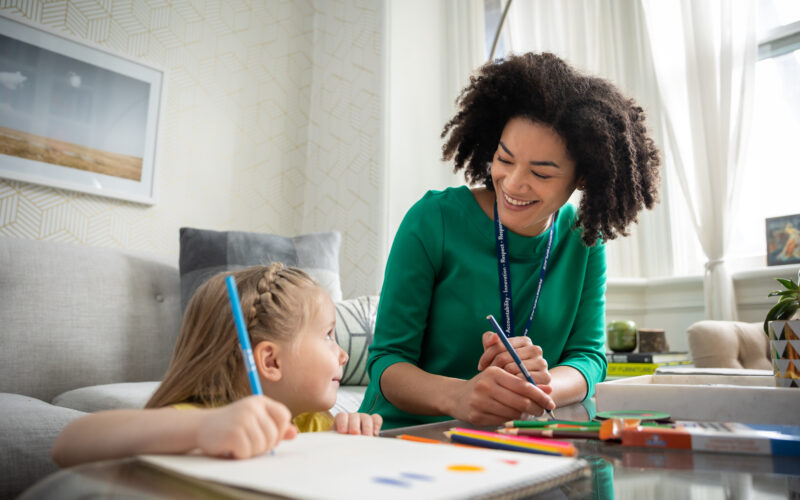By: Brad Littleproud, Autism Spectrum Disorder Consultant, School Support Program
Since the start of the COVID-19 pandemic, families and educators across the world have had to pivot to attending school remotely, using online platforms. But did you know that even before the pandemic, Surrey Place’s School Support Program has helped children and youth with autism spectrum disorder (ASD) as they move through Ontario’s education system?
Surrey Place is proud to be the lead agency responsible for the program in the Toronto region since it was developed by the Ministry of Children, Community and Social Services and the Ministry of Education in 2004. Our team has 20 interdisciplinary ASD Consultants, like me, who have expertise in education, applied behaviour analysis (ABA) and ASD. Together, we build connections between agencies, schools, and publicly-funded school boards so that educators have the tools they need to teach and support students with ASD.
Fast forward to today – you might be wondering, how has the pandemic affected our ability to support educators? COVID-19 hasn’t stopped our small but mighty team from banding together to help educators across the region! In fact, since April 2020, we’ve successfully serviced almost 6,500 teachers remotely by shifting our learning modules online. Whether we’re working together in person or from home, our School Support Program is still here to help.
As with many of the services at Surrey Place, our team rose to meet the unique challenges faced by families and educators during the pandemic. Even with school interruption, transition to online schooling, and a return to in-class learning following school closures, our ASD Consultants have provided a continuity of services through Telehealth platforms. We’ve been collaborating with Board partners and conducting online consultation meetings with educators to support our students who are learning at home or in the classroom. Our team is also here to help school board staff develop and share resources and materials.
In addition to moving our consultations online, we also expanded our online webinars offered through Wellness Services. These events are targeted towards school board staff and caregivers, and include events like Visual Supports in the Classroom, ABA Strategies and the Return to School (after the COVID-19 interruption), Supporting Virtual Learning, and more!
Throughout the pandemic, ASD Consultants have remained in supportive contact with the families we serve. Whether it’s by video call or simply by phone, being in touch with our clients is of utmost importance to our team, and to everyone at Surrey Place.
At the end of the day, change is inevitable in how we do our work. The School Support Program continues to meet those changes, challenges, and needs of the families, children and education staff whom we assist. We’re doing this by exploring new opportunities to help in the many other transitions that happen during the lifespan of our clients. Our dedicated and knowledgeable staff are always available to help!
To learn more about the School Support Program at Surrey Place, visit: www.surreyplace.ca/schoolsupportprogram.


